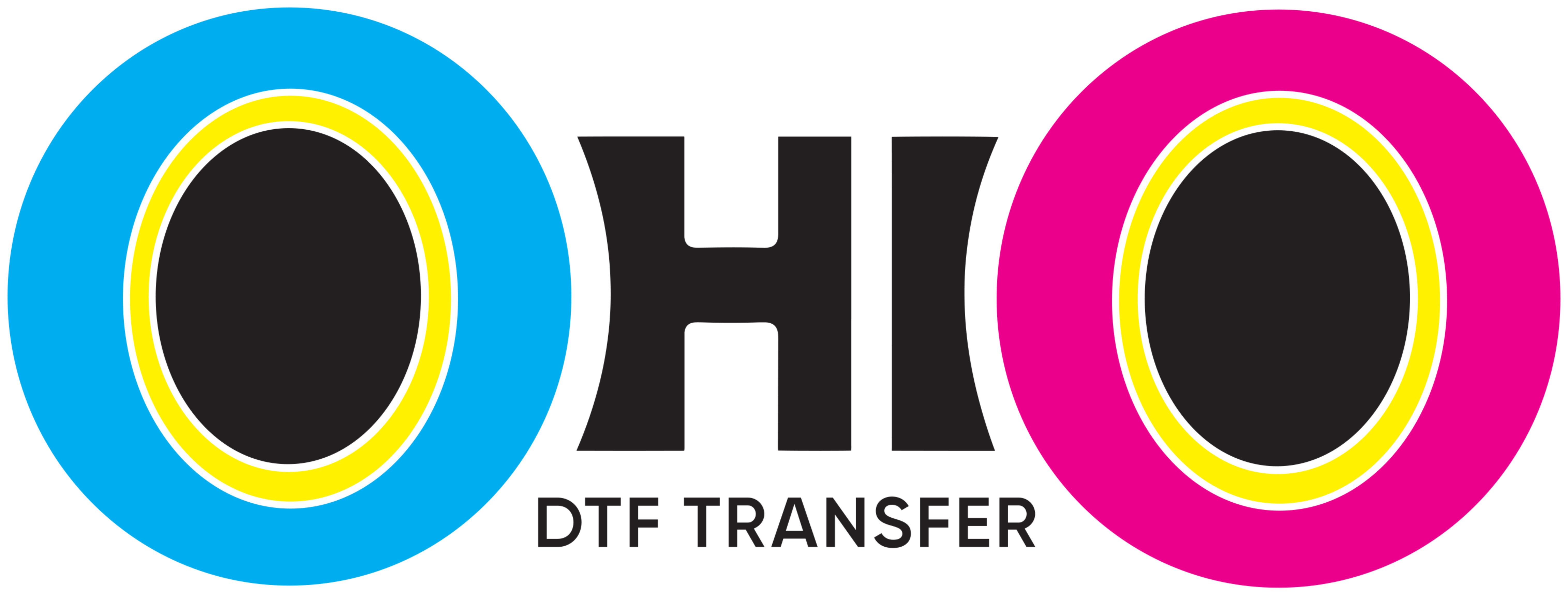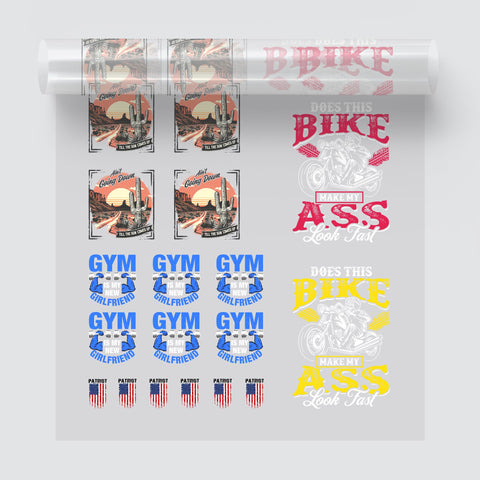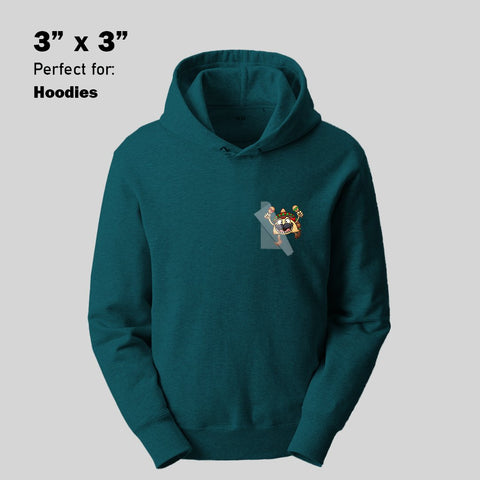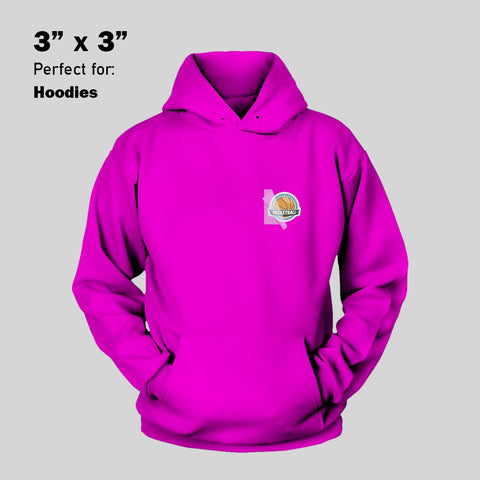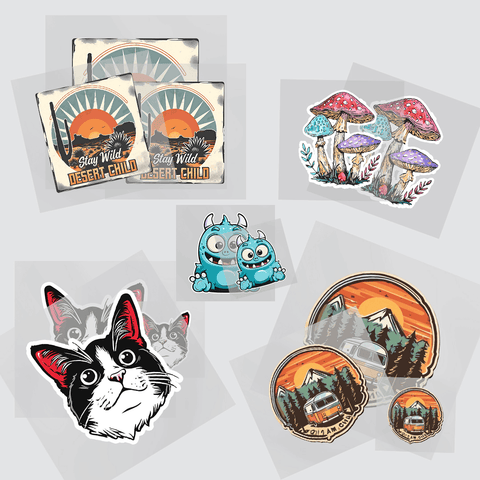3 products
The Ultimate Guide to DTF Printing for Shirts
DTF Shirt Print - DTF (Direct-to-Film) printing is an advanced textile printing technology that allows high-quality, detailed designs to be transferred onto various fabrics using a special film and heat press. Unlike traditional methods such as screen printing or sublimation, DTF provides excellent color vibrancy and durability, making it a preferred choice for many apparel businesses. It works seamlessly on cotton, polyester, blends, and even dark-colored fabrics, offering more flexibility than many other printing techniques.
Why Choose DTF Shirts?
DTF printed shirts offer several advantages over other printing methods:
- Vibrant Colors: DTF transfers produce bright, long-lasting colors that retain their intensity even after multiple washes.
- Versatile Application: Suitable for various fabric types, including cotton, polyester, blends, and even silk. DTF transfers also work exceptionally well on dark fabrics like black shirts.
- Cost-Effective for Small Runs: DTF is ideal for both small and large production runs, making it accessible for small businesses and individual custom orders.
- Detailed Designs: Capable of printing intricate, high-resolution designs, including gradients, fine lines, and complex patterns.
- Soft Feel: Unlike some printing methods that leave a thick, plasticky layer, DTF transfers result in a soft, flexible finish that integrates seamlessly with the fabric.
- Durability: DTF prints are known for their longevity, resisting cracking, peeling, and fading over time. Dtf Shirt Print.
How Does DTF Shirt Printing Work?
The DTF process involves several key steps:
-
Design Preparation:
Create or import your digital design using graphic software such as Adobe Illustrator or Photoshop. Ensure the design is high resolution for the best print quality. -
Film Printing:
The design is printed onto a special DTF film using a DTF printer equipped with CMYK and white inks. The white ink layer is crucial for printing on dark fabrics, providing an opaque base that makes colors pop. -
Powder Application:
A hot-melt adhesive powder is evenly applied to the printed film. This powder helps the design adhere to the fabric during the heat-pressing process. -
Curing:
The powder-coated film is heated (cured) to melt the adhesive, ensuring it bonds properly. This can be done with a heat press or curing oven. -
Transfer:
The cured film is placed onto the shirt and pressed using a heat press machine. The heat activates the adhesive, transferring the design from the film to the fabric. -
Peeling:
Once the shirt cools, the film is carefully peeled off, leaving the vibrant, high-quality design on the fabric.
Best Shirts for DTF Shirt Print Transfers
Choosing the right fabric enhances the quality and longevity of DTF prints:
- 100% Cotton: Ideal for DTF printing due to its absorbency and comfort. Cotton shirts produce vibrant prints that last longer.
- Polyester and Blends: DTF transfers adhere well to polyester and cotton-poly blends, making them perfect for sportswear and performance shirts.
- Dark Fabrics: Black and dark-colored shirts benefit from DTF’s white ink base, ensuring designs remain vivid and eye-catching.
DTF Shirt Print on Black Shirts
Printing on black or dark-colored shirts can be challenging with traditional methods, but DTF makes it easy. The process involves a white base layer that ensures the colors stay vibrant and true-to-design. This is particularly useful for creating bold, contrasting graphics on dark fabrics.
Benefits:
- No need for pretreatment
- Excellent color visibility and sharpness
- Durable prints that don’t fade easily
DTF Shirt Print - DTF vs. Other Printing Methods
DTF vs. Screen Printing:
- Complexity: DTF allows for intricate designs and full-color images, while screen printing is better suited for simple designs with fewer colors.
- Cost: Screen printing can be more expensive for small runs due to setup costs. DTF is more cost-effective for custom or small-batch orders.
Direct to Film Shirt Print vs. Sublimation:
- Fabric Compatibility: Sublimation only works on polyester and light-colored fabrics, whereas DTF works on a wide range of materials and colors.
- Color Vibrancy: Both methods produce vibrant prints, but DTF's ability to print white ink makes it superior for dark fabrics.
Tips for Pressing DTF Transfers
To achieve the best results, follow these guidelines:
- Temperature: Set the heat press to 150-160°C (302-320°F).
- Pressure: Apply medium pressure for 10-15 seconds.
-
Peeling: Allow the transfer to cool before peeling the film. Cold peeling ensures the adhesive fully sets and prevents smudging.
Popular Applications of DTF Printing
- Custom T-Shirts: Ideal for personalized or branded shirts with logos, artwork, or text.
- Sportswear: Durable, stretch-resistant prints perfect for team uniforms.
- Promotional Items: Cost-effective for small-batch production of custom merchandise.
-
Fashion Lines: High-quality, vibrant prints for independent designers and boutique brands.
Conclusion: Why DTF for Shirts?
DTF printing offers a revolutionary approach to custom shirt printing, combining versatility, durability, and stunning color quality. Whether you’re a small business owner, a designer, or simply looking to create personalized apparel, DTF provides a flexible and reliable solution for producing high-quality shirts that stand out.
Click For DTF Transfers Catagory
Vikipedi - DTF
